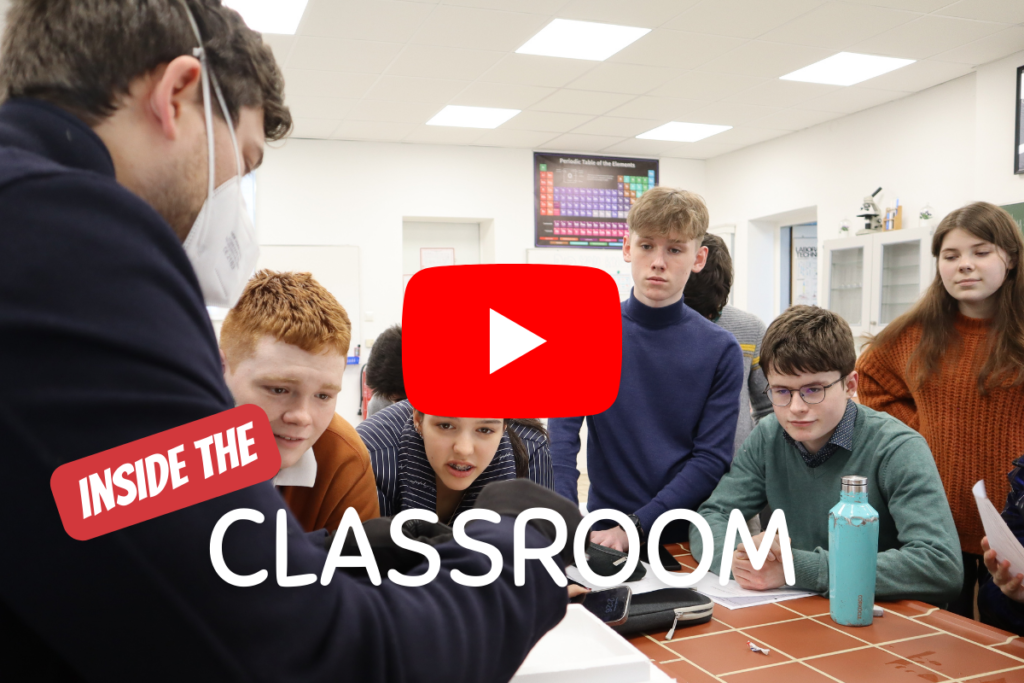
Grade 10 Chemistry Students Observe Dry Ice Demonstration
March 13, 2023
This past Thursday, Grade 10 Chemistry students observed a dry ice demonstration performed by their teacher, Mr. Leicher. Dry ice is a fascinating and fun material for students, from making “fog” to “boiling in water,” it is well-known for creating special effects. Carbon dioxide, however, also has fascinating and very useful chemical properties. At room temperature and pressure, solid carbon dioxide will warm to –78 °C and then begin to sublimate to carbon dioxide gas. The carbon dioxide gas is, initially, also at –78 °C, which causes moisture in the air to condense and form the characteristic fog that dry ice is famous for.
One interesting feature of carbon dioxide is that at atmospheric pressure, it only exists as a solid or gas. In order to exist as a liquid, carbon dioxide must be subjected to a pressure of at least 5.11 atmospheres. Most chemicals will exist as a solid, liquid, or gas depending on temperature and pressure. This relationship between phase, pressure, and temperature can be presented graphically in the form of a phase diagram. The point at which all three phase boundaries meet is called the triple point and signifies the temperature and pressure at which all three phases exist and are in equilibrium.
We invite you to watch the highlight video below of this demonstration.

